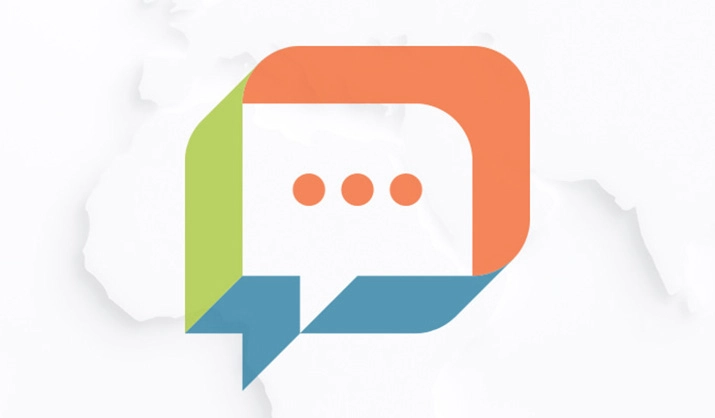The connection you establish with your customers or clients begins from the moment they first learn about your brand and extends through the lifetime of your relationship with them. Cultivating a consistent and effective approach to the way you communicate with your customers establishes trust, nurtures relationships, and develops loyalty.
Communications research uncovers insights that guide the creation of potent messaging so you can interact with customers more efficiently at key moments in the customer journey. Research also helps you test and adjust your messaging according to audience perceptions, and it creates a baseline that allows you to check in with customers on an ongoing basis to track their level of satisfaction.
Brands use research insights to track their competitors, stay on top of trends in media consumption, and anticipate changes in values and expectations in the market landscape. A unified Communications approach enables brands to address negative feedback from customers or clients and makes it possible to react with confidence during times of crisis.
When should companies consider conducting Communications research?
Brands will typically consider Communications research when introducing a new product, service, or brand extension; when they’re planning a brand refresh; or as changes in the market signal a need for revisions to the current messaging strategy.
A comprehensive view of your Communications strategy is one of the eight pillars in our Brand Growth Navigator framework that fosters long-term brand health. Communication research serves overall brand health by helping teams:
- Establish a clear brand identity.
Communications research explores how messages are perceived by customers, providing insights into audience reactions so brands can hone their profiles. For instance, Communications research can evaluate the impact of marketing campaigns on an ongoing basis to ensure messages are aligning with the brand as well as with the target customers it seeks to attract. - Build a messaging hierarchy.
Research insights provide structure to messaging, defining which messages are foundational and which are supplementary to ensure consistency in Communications and a cohesive brand narrative. - Maintain market advantage.
Brands can use Communications research to understand how competitors’ communications are resonating with their audience. These insights lead to opportunities for differentiation and improvement in messaging strategies. Teams can also adjust messaging when changes in the landscape emerge. - Build strong connections with customers.
Tracking the customer experience is also essential. Reviewing customer feedback across internal and external changes, or through a more formal customer satisfaction survey, will uncover gaps where Communications aren’t meeting customer expectations.
A clear approach to messaging is an essential element of brand health.
When teams can identify and promote the core benefits of their product or service that matter most to customers, they are able to focus on how and when to deliver those messages to the brand’s best advantage. With a clear view of core benefits, teams can create the right positioning to ensure their brand will resonate with the right customers and present a compelling alternative to the competition. (Access our Brand Building snapshot (PDF) to learn more.) This fundamental understanding also enables brands to continue to nurture their customer relationships to deepen engagement, loyalty, and customer retention.
Brands that take the time to explore these issues consistently drive deeper engagement by creating memorable communications and can demonstrate to customers the value that their product or service will bring to their everyday life.”
Research insights reveal a clear path for Communications along with the nuances that resonate on a deeper level with the consumers or clients they most want to attract. Consumer feedback plays a crucial role in identifying the tone and brand voice characteristics that will resonate with customers. Establishing what the brand is and what it offers enables brand teams to develop messaging around brand value and key benefits. It empowers your team to articulate positions that track with core rational and emotional benefits to enhance the overall image of your brand.
Brands that take the time to explore these issues consistently drive deeper engagement by creating memorable communications and can demonstrate to customers the value that their product or service will bring to their everyday life.
Stories establish customer connection with your brand.
The way you communicate will make customers notice and remember your brand. When they’re done well, your brand voice, story, and Communications will work together to create positive feelings that consumers remember at that decisive moment when they’re zeroing in on a purchase decision. To ensure that you’re creating effective and memorable Communications, you need to:
- Demonstrate value to show that your product or service meets a need that will improve the customer’s life in some way.
- Tell a story that will resonate with customers on an emotional level by supporting your core story and connecting your product to customers’ experiences.
- Appeal to the emotions. Humor is one of the most memorable devices in Communications, but when humor is not an option, consider how people connect with your product or service on an emotional level and build visuals and Communications that convey the appropriate emotion
- Reveal some unknown truths about the category and how your offering differs from what is on the market now to solve problems or enrich lifestyles.
Building strong stories requires that you know your customers or clients well. Research insights deliver critical data about underlying emotions and how to connect with them through optimal messaging.
Getting close to customers leads to highly personalized content.
Customer-driven stories help brand teams transform marketing copy into a conversation. Optimized messaging paired with smart marketing automation helps brands reach their targets at the right moment with the right message. As technology continues to advance, marketers will have more opportunities to enhance the customer journey through precise messaging to enrich their Communications programs; but the first step in developing a rich tech solution is developing a deep understanding of your clients or customers. Uncovering rich insights about how customers view your brand and what makes them interact with your products, along with the nuances of what moves them to select your offering over that of the competition, can be learned only through reaching out and talking with them. The insights gained from these sessions lead to stronger digital strategies. Read more about the relationship between data-driven marketing and customer relationships.
Communications research insights create a framework for powerful messaging.
Numerous AI-driven technologies promise to save marketers time and effort by delivering copy, but human insight is still the critical element in effective Communications. When brand teams have a defined hierarchy for messaging, as well as an intimate knowledge of what resonates with their customers, they can generate better outcomes for their brand. Exploring what customers want through Qualitative and Quantitative methods results in a rich set of insights that teams can draw from to create messaging that resonates with their targets.
Typically, this research begins with Qualitative discussions with customers to identify the key factors that will make sense to them as they are making decisions about a brand. In this initial phase, teams will learn more about how to appeal to customers – for example, through emotional or intellectual means. They’ll get a broad perspective on the language to use, along with information about how consumers are talking about the broad category.
With these insights, teams can build test messaging to address the issues that customers care about and test them in quantitative assessments where messages are ranked and prioritized into top-level and supporting points to identify which messages motivate customers the most, tweak the messaging to highlight brand voice, and make sure the messages convey a level of truth to customers. Read more about how to develop Communications that lead to brand selection.
A tailored approach delivers specific research insights.
Our approach to Communications research is unique to each engagement. We research the market landscape and talk with key stakeholders to gain a better understanding of the product or services the company offers, as well as of the goals team members want to achieve with the research.
Our process begins with initial research to identify motivating brand characteristics through trade-off exercises to prioritize key messaging. We also look at the key drivers that move the needle on engagement and loyalty and use those as a foundation to build on.
We examine customer needs and desires to identify which define and differentiate your key segments so we can build a framework for messaging around themes that address key needs, and then identify the touchpoints where specific messages are most appropriate.
Testing is critical, and throughout the engagement we host sessions with consumers and with your key stakeholders to ensure that the messages are compelling, persuasive, believable, unique, and motivating, and, most importantly, that the messaging aligns with the target audience who will hear them.
Learn more about the relationship between targeted messaging and brand success.
Interactions with customers are designed to support growth outcomes.
Immersive sessions explore customer needs, challenges, and desires. We employ a range of methods to encourage consumers to provide input and feedback. The insights gained integrate the customer voice into empathetic messages. Some of the methods we use include:
- Stakeholder interviews to explore attitudes and aspirations internally.
- In-depth interviews (IDIs) with consumers to learn more about their emotional connections with a brand.
- Ethnographies, in-home or in-office visits where we can observe customers and clients interacting with a product in their own environment.
- Pop-up communication opportunities where, for example, a brand team can interact with target consumers.
- Consumer Connects co-creation and ideation work sessions where we invite consumers to interact with brand teams in a work session setting to design or refine Communications.
- Bulletin Boards where consumers can interact online with messaging to provide feedback and tweaks.
We use several approaches to develop and test Communications strategy, including:
- Brainstorming sessions to establish message hierarchy or generate ideas, storylines, and themes.
- Preliminary message testing that identifies themes that strongly resonate with customers.
- Real-time Concept Optimization (RTCO) sessions that invite customers to co-create messages on the fly, resulting in quickly developed and more accurate copy.
- Max-Diff exercises where customers review and prioritize messaging statements to further refine and validate messaging.
- Online focus groups for feedback on messaging and visuals.
Insights gleaned through Qualitative sessions are confirmed during the Quantitative phase, resulting in a rich view of customer preferences regarding a variety of brands and product considerations.
Learn more about our activation-focused approach to Communication research.
Testing messages mitigates risk and optimizes impact.
Testing and refining messaging ensures that the Communications will feel authentic to the intended audience. We want to ensure that the Communications align with the core integrity of the brand, along with that of the product or service that’s being offered. Testing can also reveal red flags or pitfalls in Communications that brands should avoid.
The process works best when diverse teams and disciplines can be involved. Whenever possible, we collaborate with stakeholders and customers, as well as with third-party partners that can range from media strategy agencies to retail partners or dealers.
In this Insights Snapshot, Christine Drummond and Jon Weeks discuss our approach to Communications research and the importance of vetting and testing messaging to ensure success:
A well-defined Communications platform helps brands to track progress.
Brands with a purpose-driven Communication program can efficiently monitor and adapt as customer needs shift. Listening to clients and customers while tracking the market pulse helps teams across the organization:
- Set and review KPIs to monitor and analyze brand health and tweak Communications to enhance market positioning.
- Identify Communications gaps through ongoing research to optimize or enhance Communications to address customer or client needs.
- Learn from customer feedback and adjust Communications strategies to ensure messaging is aligned with customer expectations.
- Enhance long-term growth strategy by delivering optimal content that fosters ongoing engagement, repeat purchases, and a longer customer lifecycle.
- Identify changes in the decision path to quickly adapt Communications when customers pivot or trends change.
- Assess brand content to ensure it remains relevant, meaningful, believable, and memorable to its audience.
A strong Communications platform serves as an agile toolkit to make small adjustments or to signal when it’s time for bigger changes. Read more about how an ongoing Communications strategy transformed the way a financial services firm approached its Communications.
Activation sessions ensure brand teams can effectively integrate the new messaging.
Throughout a Communications research engagement, we work closely with client teams, embedding activation into each aspect of the engagement. Integrating messaging is an art as well as a science, and once we’ve delivered the research, we move into a consultancy role to help cross-functional teams understand the research and integrate it into their overall Communications strategy.
We first explore messages that resonated during the research and explore how the insights reveal the best way to communicate with different audiences, personas, subgroups, and key targets. We also want to make sure that teams understand the overall hierarchy and the impact it can have on brand growth, and then we work with teams to refine details so they can develop action plans based on the insights.
Activation sessions can vary widely depending on the needs of the project and the size of the team. Following are some examples of the types of activation sessions we host.
- Executive Summary overview sessions bring teams together for a high-level overview of the research and serve as an introduction to the most salient research insights we’ve uncovered. We prepare tailored reports according to team function. Learn more about our Executive Summaries.
- Looking Glass workshops are extended sessions with cross-functional teams where we can dig deep into the research to explore ways to use the research to build strategic messaging to meet specific needs.
- Team-focused consulting sessions give us an opportunity to develop strategy and KPIs that teams can work with to build tests that will help refine and optimize the new material.
We provide materials that will help the research result in impacts for each team, and we often host role-playing sessions where team members can improvise conversations with customers based on the messaging insights. Combining live interaction, hands-on work sessions, and visual materials accelerates learning and retention, and it socializes the messages – both between teams and across the organization.
We schedule check-ins with teams after our work sessions to see how the new messaging is tracking and offer support to ensure that the platform is achieving their goals and that it’s serving growth objectives.
Invite customers into the conversation.
Staying close to customers is a rewarding practice. The insights your clients or customers share provide rich material for ongoing communications, and when they see themselves reflected in your brand, the connection is reinforced.
Ready to explore the best ways to cultivate effective communication with your customers?







